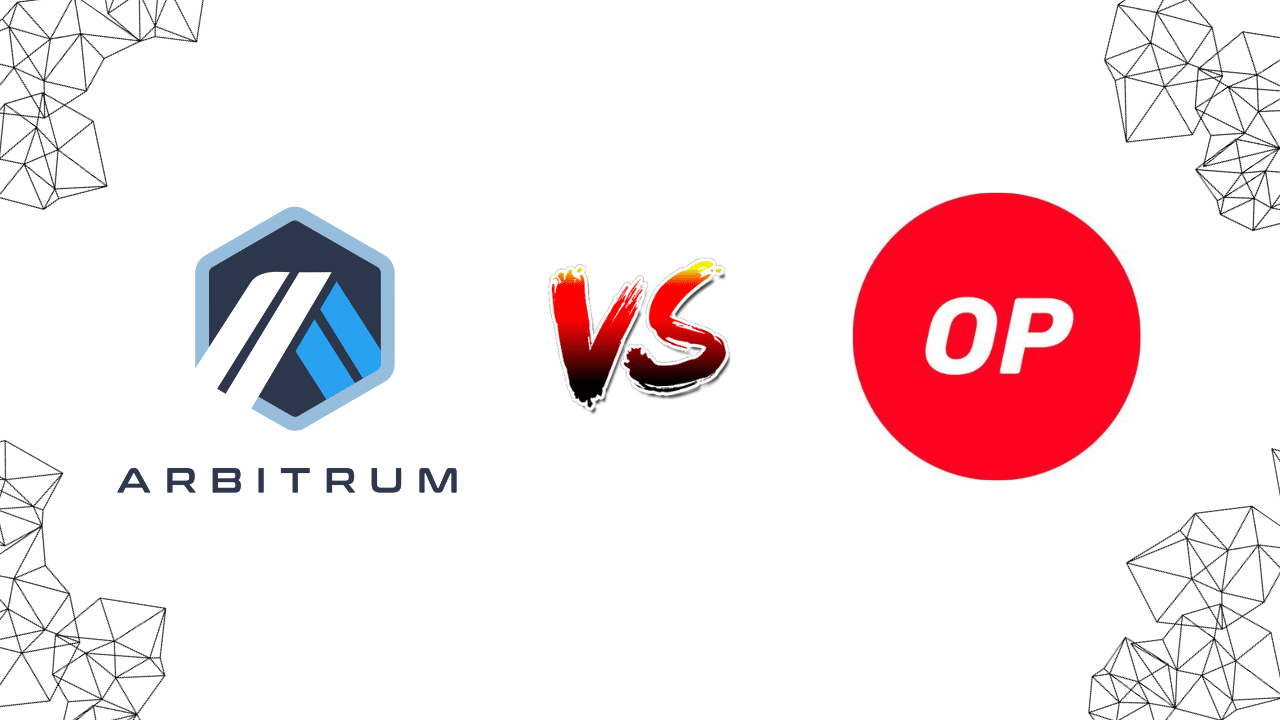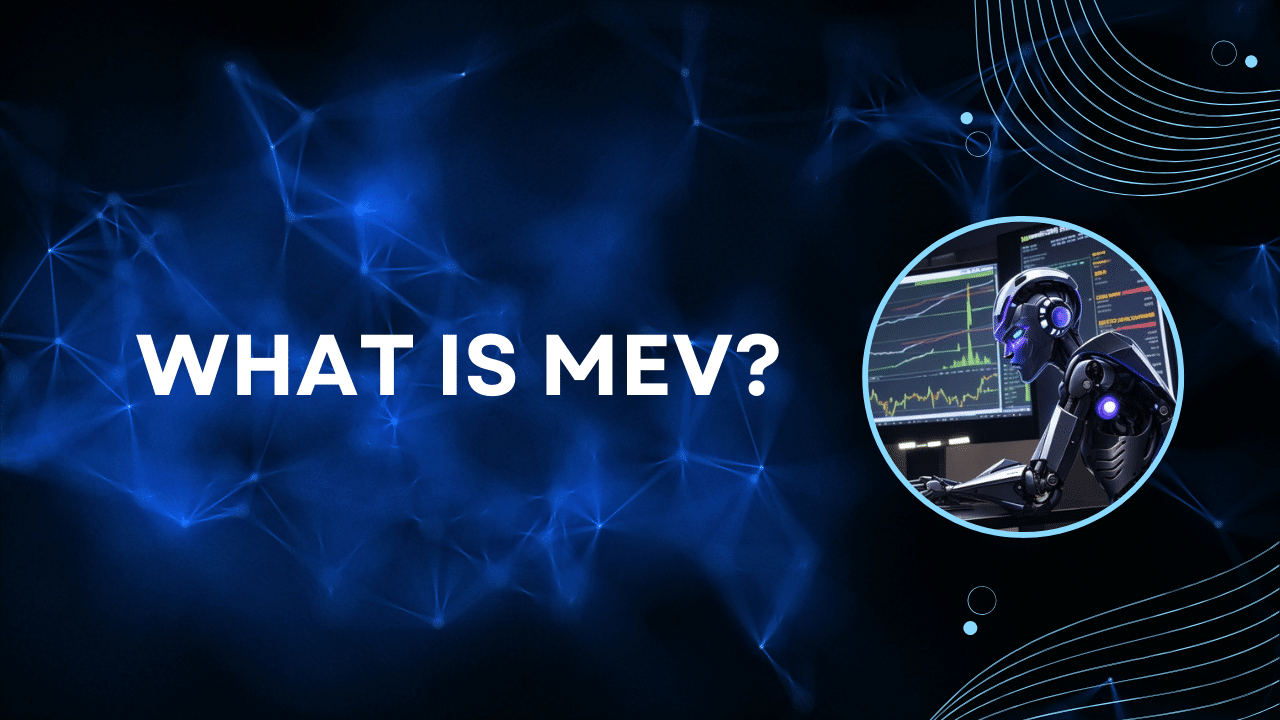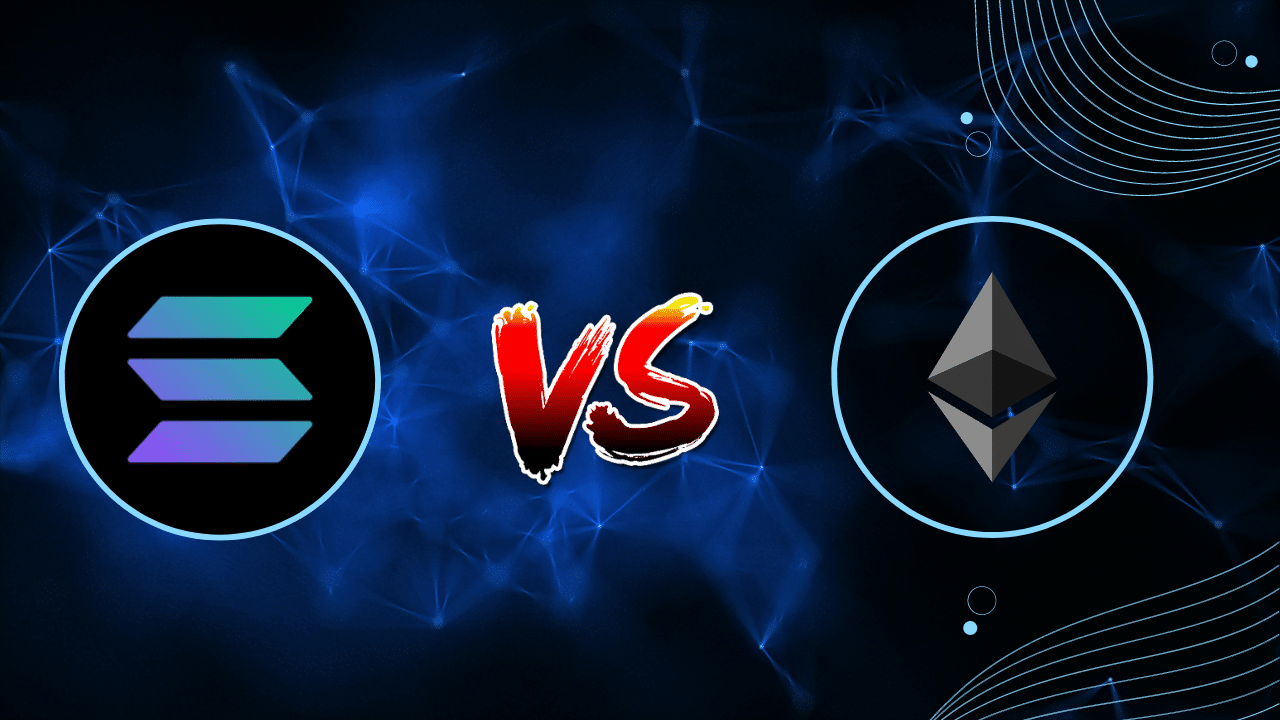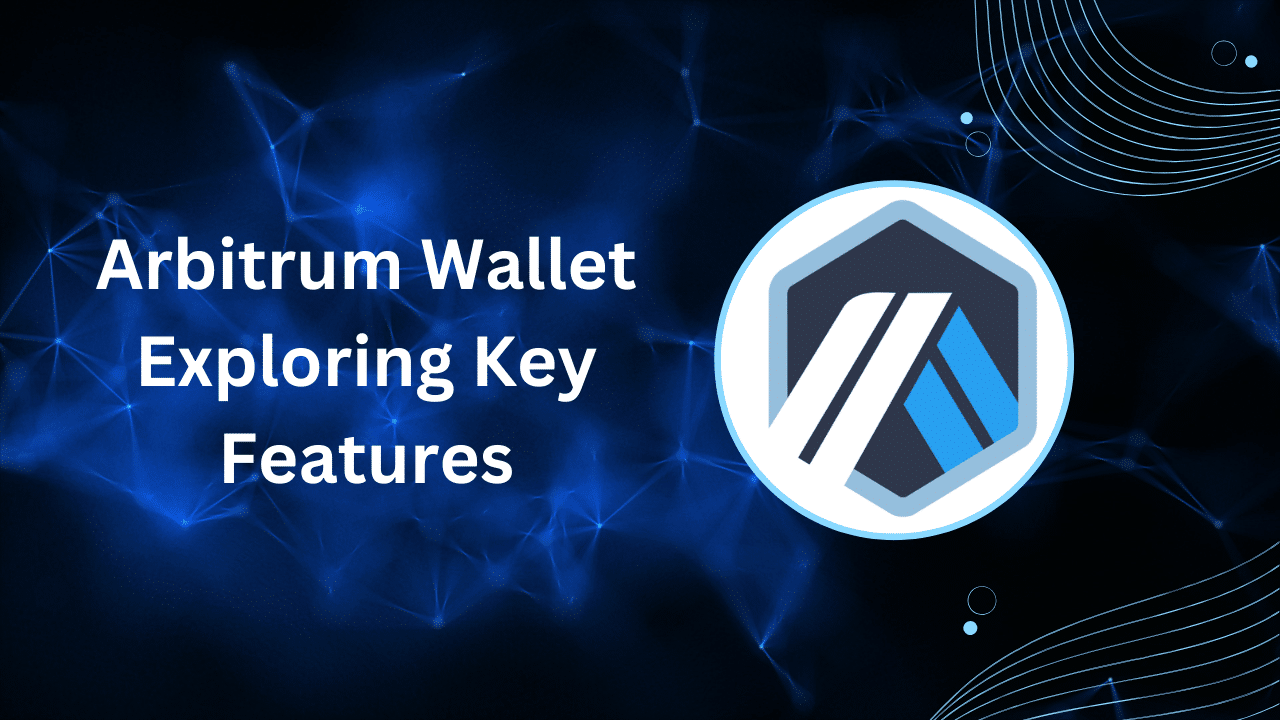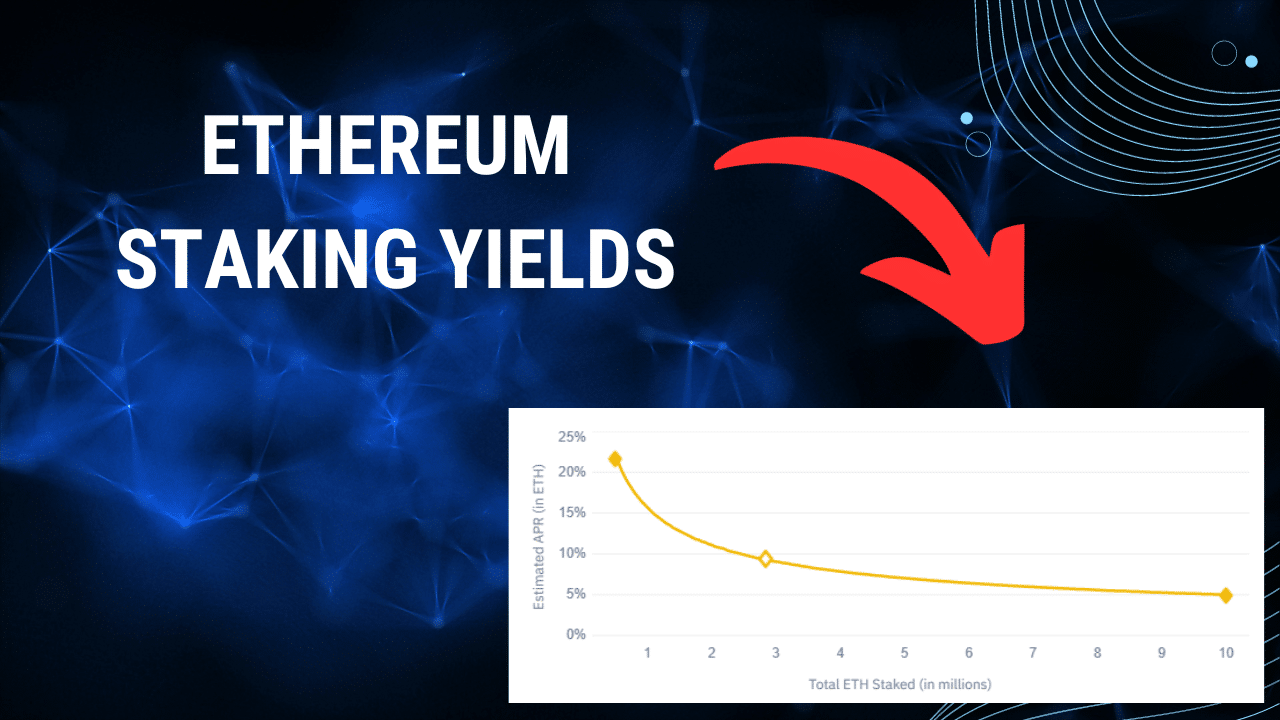Contents
|
|
Are you ready to take your Ethereum experience to the next level with our future plans? Experience faster transaction times with our airdrop feature and make use of the revolutionary op token. If you’re looking to enhance scalability and reduce transaction fees on the ethereum blockchain, look no further. The ethereum virtual machine provides efficient data availability and exchange. The battle between Arbitrum vs Optimism, two prominent Layer 2 solutions on the ethereum blockchain, has captured the attention of the crypto community. This competition aims to improve transaction times and transaction finality on the ethereum blockchain, with potential benefits for airdrop campaigns. But which one should you choose?
We’ll examine the pros of their respective chain architectures and consensus mechanisms in order to determine which solution, whether it’s the ARB protocol or another, offers a more seamless user experience. Buckle up as we navigate through the intricacies of Layer 2 scaling solutions, including chains, airdrop, protocol, and arb.
Contents
Unraveling Arbitrum’s Functionality
Arbitrum and Optimism are two prominent Layer-2 scaling solutions that aim to address the scalability issues of the Ethereum network. These solutions have their own pros and cons, but they both offer significant improvements in terms of scalability and efficiency. Additionally, they introduce their own token, which plays a crucial role in the functioning of the network.
How does Arbitrum work?
Arbitrum, built on Optimistic Rollups technology, has its pros and cons. It bundles multiple transactions together and submits them to the Ethereum mainnet in a compressed format. The pros of this approach are a significant reduction in gas fees and increased transaction throughput, while the cons are not mentioned. Overall, this method offers an op solution for improving efficiency and cost-effectiveness.
Arbitrum achieves scalability by employing a technique called “optimistic execution.” This means that instead of executing every transaction on-chain, it assumes that all transactions are valid unless proven otherwise. One of the cons of this approach is that it may lead to potential security risks. By using op, it can op process transactions off-chain op more quickly and efficiently.
The role of validators
Validators play a crucial role in Arbitrum’s functionality. They are responsible for verifying the correctness of op transactions submitted to the system. Validators op monitor disputes and ensure that any invalid or fraudulent activity is detected and resolved.
Validators also participate in consensus mechanisms to ensure agreement on the state of the op system. They validate blocks produced by other participants and propose their own blocks when necessary. Through this collaborative effort, validators maintain the integrity and security of the Arbitrum network.
Cross-chain compatibility
One notable feature of Arbitrum is its cross-chain compatibility with Ethereum. Users can seamlessly transfer their assets between both networks through a process called bridging. This interoperability enables users to take advantage of Arbitrum’s scalability benefits while still being able to interact with Ethereum’s vibrant ecosystem.
Benefits and limitations
Arbitrum offers several advantages over traditional Layer-1 solutions like Ethereum:
-
Scalability: By processing most transactions off-chain, Arbitrum significantly improves throughput and reduces congestion on the Ethereum mainnet.
-
Lower fees: Gas fees have been a major pain point for Ethereum users, but with Arbitrum’s Optimistic Rollups, transaction costs are minimized.
-
Compatibility: The ability to bridge assets between Ethereum and Arbitrum allows users to tap into the benefits of both networks.
However, it is important to note that Arbitrum also has its limitations:
-
Latency: Due to the optimistic execution approach, there may be a delay in confirming transactions on the mainnet. While this delay is typically minimal, it can still impact real-time applications.
-
Centralization concerns: Validators play a key role in the functioning of Arbitrum. As such, there are concerns about centralization if a small group of validators gain significant control over the network.
Exploring Optimism’s Mechanisms
Optimism is a popular layer 2 scaling solution that aims to improve the scalability and efficiency of Ethereum. Let’s dive into how Optimism achieves this and explore its mechanisms in more detail.
Rollup Technology
One of the key mechanisms behind Optimism is its use of rollup technology. Rollups allow for the processing and verification of transactions off-chain, reducing the burden on the Ethereum mainnet. This means that instead of every transaction being processed directly on Ethereum, they are bundled together and verified in batches, significantly increasing the network’s throughput.
By utilizing rollups, Optimism can achieve faster transaction times and lower fees compared to conducting transactions solely on the Ethereum mainnet. This scalability improvement is crucial for decentralized applications (dApps) that often face congestion issues due to high demand.
Fraud Proof
Another important mechanism employed by Optimism is fraud proof. Fraud proof ensures the security and integrity of transactions processed on layer 2 by allowing users to challenge any fraudulent or incorrect information submitted to the network. In case of a dispute, users have the ability to provide evidence proving that a transaction was invalid or maliciously executed.
This mechanism acts as a safeguard against potential attacks or fraudulent activities within the system, providing an additional layer of trust for users interacting with dApps built on top of Optimism.
Decentralized Verification
Optimism also incorporates decentralized verification into its framework. Instead of relying on a single centralized entity for transaction validation, multiple validators are involved in verifying transactions within each rollup batch. These validators work collectively to ensure consensus and validate the correctness of all transactions before they are committed back to Ethereum mainnet.
Decentralized verification not only enhances security but also prevents any single point of failure from impacting the entire network. It distributes responsibility among multiple participants, making it more resilient against attacks or manipulation attempts.
Seamless Interoperability
Optimism is designed to seamlessly integrate with existing Ethereum infrastructure, making it easier for developers to adopt and migrate their dApps onto layer 2. This interoperability allows developers to take advantage of Optimism’s scalability benefits without having to rewrite or significantly modify their smart contracts.
By providing a smooth transition path, Optimism aims to encourage widespread adoption of layer 2 solutions and contribute to the overall growth and scalability of the Ethereum ecosystem.
Comparing Arbitrum vs Optimism Architectures
Both these Layer 2 scaling solutions aim to address the scalability issues faced by Ethereum. Let’s explore their similarities and differences.
Similarities between Arbitrum and Optimism
-
Ethereum Compatibility: Both Arbitrum and Optimism are designed to be compatible with the Ethereum network. They leverage Ethereum’s security model and infrastructure, allowing developers to seamlessly port their existing smart contracts onto these Layer 2 solutions.
-
Optimistic Rollups: Both architectures employ an optimistic rollup approach, which means that most transactions are processed off-chain while maintaining a high level of security through periodic checkpoints on the Ethereum mainnet. This enables faster transaction processing times and significantly reduces gas fees compared to conducting transactions directly on the Ethereum network.
-
Decentralization: Both Arbitrum and Optimism prioritize decentralization by relying on a network of validators who ensure the correctness of off-chain transactions before submitting them to the Ethereum mainnet for final settlement. This distributed validation process ensures that no single entity has complete control over the system.
Differences between Arbitrum and Optimism
-
Design Philosophy: While both solutions share similar goals, they adopt different design philosophies. Arbitrum focuses on minimizing changes to existing smart contracts, making it easier for developers to migrate their applications without significant modifications. On the other hand, Optimism takes a more opinionated approach by requiring certain code optimizations for better performance.
-
Security Trade-offs: In terms of security trade-offs, Arbitrum prioritizes speed by allowing users to immediately withdraw funds from Layer 2 back to Layer 1 without waiting for any challenge periods or dispute resolutions. However, this comes at the cost of potentially higher fraud risk if malicious actors attempt to submit invalid transactions during this withdrawal period.
-
Developer Experience: Optimism offers a more developer-friendly experience by providing an extensive set of developer tools and documentation. It also supports a wider range of programming languages, making it easier for developers to build on top of the platform. Arbitrum, while still user-friendly, may require additional effort from developers due to its focus on maintaining compatibility with existing Ethereum contracts.
-
Deployment Status: As of now, Optimism has been deployed on the Ethereum mainnet and is available for public use. On the other hand, Arbitrum is currently in a testnet phase but is expected to launch on the mainnet soon.
Analyzing Account Abstraction in Arbitrum vs Optimism
Account abstraction is a critical aspect of layer 2 scaling solutions like Arbitrum and Optimism.
Account Abstraction in Arbitrum:
Arbitrum utilizes a technique called “account abstraction” to enable efficient execution of smart contracts. With account abstraction, users can interact with smart contracts on the Ethereum network without having to hold Ether (ETH) directly. Instead, they can use other assets as collateral, such as ERC-20 tokens or stablecoins.
This approach offers several advantages. First, it reduces the need for users to hold ETH solely for transaction fees, making it more convenient for them to participate in decentralized applications (DApps). Second, it allows developers to design DApps that accept multiple types of collateral, increasing flexibility for users.
Account Abstraction in Optimism:
Similarly, Optimism also employs account abstraction to enhance scalability and usability. Users can interact with smart contracts on the Optimistic Ethereum network without needing ETH directly. Instead, they can use Wrapped Ether (WETH), which is an ERC-20 representation of ETH that can be used as collateral.
By abstracting away the requirement for direct ETH holdings, Optimism enables a seamless user experience while reducing friction associated with gas fees. This makes it easier for users to engage with DApps on the platform and encourages broader adoption.
Similarities between Arbitrum and Optimism’s Account Abstraction:
Both Arbitrum and Optimism share a common goal of improving scalability and usability through account abstraction. By allowing users to utilize alternative assets as collateral instead of requiring direct ETH holdings, both platforms aim to make interacting with smart contracts more accessible and cost-effective.
Both solutions leverage existing standards like ERC-20 tokens (Arbitrum) and Wrapped Ether (Optimism) to facilitate account abstraction. This approach ensures compatibility with the broader Ethereum ecosystem and simplifies integration for developers.
Differences between Arbitrum and Optimism’s Account Abstraction:
While both platforms employ account abstraction, there are some differences in how they implement this mechanism. For instance, Arbitrum supports a wide range of ERC-20 tokens as collateral, providing users with greater flexibility in choosing their preferred assets. On the other hand, Optimism currently only accepts Wrapped Ether (WETH) as collateral.
Moreover, the underlying technologies used by Arbitrum and Optimism differ. Arbitrum utilizes a rollup-based solution that aggregates transactions off-chain before submitting them to the Ethereum mainnet.
Ethereum Scaling Battle: Arbitrum vs Optimism
The Ethereum network has been facing scalability issues for quite some time now, with high transaction fees and slow confirmation times becoming major pain points. In response to this challenge, several Layer 2 scaling solutions have emerged, including Arbitrum and Optimism. These two platforms aim to enhance the scalability of Ethereum by offloading transactions onto secondary chains while still maintaining a strong connection to the main Ethereum network.
Speed and Throughput
Arbitrum and Optimism both offer significant improvements in terms of speed and throughput compared to the main Ethereum network. Transactions on these Layer 2 solutions can be processed much faster, thanks to their use of a sidechain or rollup technology. This allows for a higher number of transactions per second (TPS), enabling users to carry out their transactions quickly and efficiently.
Security and Decentralization
Both Arbitrum and Optimism prioritize these aspects in their design. They leverage the underlying security of the Ethereum network by anchoring data on-chain at regular intervals, ensuring that any malicious activity can be detected and mitigated effectively.
Arbitrum employs an optimistic rollup approach that relies on fraud proofs. In this model, transactions are initially assumed valid unless proven otherwise through fraud proofs submitted by users or validators. On the other hand, Optimism utilizes a similar mechanism called optimistic rollups but with a different implementation known as OVM (Optimistic Virtual Machine). The OVM executes smart contracts off-chain while providing dispute resolution capabilities on-chain if necessary.
User Experience
Both Arbitrum and Optimism aim to provide a seamless user experience by allowing users to interact with Layer 2 applications using their existing Ethereum addresses without any additional setup or migration process required. This means that users can continue using their favorite wallets or dapps without any disruption while enjoying improved scalability and lower fees.
Adoption and Ecosystem Support
In terms of adoption and ecosystem support, both Arbitrum and Optimism have gained significant traction. They have attracted a wide range of projects and developers who are eager to leverage the benefits of Layer 2 scaling. Many popular decentralized applications (dapps) and protocols have already integrated with these platforms, showcasing their potential for widespread adoption in the Ethereum ecosystem.
Trade-Offs
While Arbitrum and Optimism offer compelling solutions to Ethereum’s scalability challenges, there are trade-offs to consider. Both platforms require users to wait for a certain period before they can withdraw their funds from Layer 2 back to the main Ethereum network.
Key Similarities and Differences
Similarities between Arbitrum and Optimism
Arbitrum and Optimism are both Layer 2 scaling solutions for the Ethereum network. They aim to address the scalability issues of Ethereum by enabling faster and cheaper transactions. These solutions utilize a technique called optimistic rollups, which allows them to process a large number of transactions off-chain while still maintaining the security of the Ethereum mainnet.
Both Arbitrum and Optimism offer significant improvements in transaction speed compared to the Ethereum mainnet. By processing transactions off-chain and only submitting a summary of those transactions to the mainnet, they can achieve much higher throughput. This means that users can experience faster confirmation times and lower fees when using applications built on these scaling solutions.
Differences between Arbitrum and Optimism
While Arbitrum and Optimism share similarities, there are also some key differences between them.
One major difference lies in their approach to achieving scalability. Arbitrum uses a technology called “Truebit” to verify the correctness of off-chain computations before submitting them to the Ethereum mainnet. This additional verification step adds an extra layer of security but may result in slightly slower transaction speeds compared to Optimism.
On the other hand, Optimism takes a different approach by utilizing a technique known as “optimistic execution.” Instead of verifying each off-chain computation individually, it assumes that all computations are correct unless proven otherwise. This allows for faster transaction speeds but introduces some level of risk if malicious actors attempt to manipulate or submit fraudulent transactions.
Another difference is in their development progress and adoption within the Ethereum ecosystem. While both projects have gained significant attention and support, Optimism was launched earlier than Arbitrum, which has given it a head start in terms of deployment and integration with existing applications. However, this does not necessarily mean that one solution is superior to the other; it simply reflects differences in timing and implementation strategies.
In terms of user experience, the two solutions may also have slight variations. The way users interact with applications built on Arbitrum and Optimism could differ due to differences in how they handle transaction finality and dispute resolution. It’s important for developers and users to understand these nuances when choosing which solution to utilize.
The Future Roadmap: Developments and Catalysts
Layer 2 Scaling Solutions
The future roadmap for both Arbitrum and Optimism involves continuous development and improvement of their respective layer 2 scaling solutions. Both platforms are committed to enhancing scalability, reducing transaction costs, and improving user experience in the Ethereum ecosystem.
Adoption by DApps and Users
A crucial factor that will shape the future of Arbitrum and Optimism is the adoption by decentralized applications (DApps) and users. As more DApps integrate with these layer 2 solutions, it will drive increased usage and demand for their services. This adoption will be influenced by factors such as ease of integration, cost-effectiveness, security, and overall performance.
Ecosystem Support
The support from the wider Ethereum ecosystem is also vital for the success of both Arbitrum and Optimism. Collaboration with other projects, including wallets, exchanges, and infrastructure providers, is essential to create a seamless user experience. Developer communities play a significant role in driving innovation on these layer 2 platforms through building new applications or migrating existing ones.
Network Effects
Network effects can significantly impact the growth trajectory of any technology or platform. In the case of Arbitrum vs Optimism, network effects refer to how each solution attracts users based on its existing user base. As more users join either platform due to its advantages or popularity within certain communities or sectors (such as gaming or DeFi), it creates a positive feedback loop that further drives adoption.
Upcoming Upgrades
Both Arbitrum and Optimism have plans for upcoming upgrades that aim to address current limitations and introduce new features. These upgrades may include improvements in scalability, security enhancements, compatibility with other blockchains or layer 1 networks beyond Ethereum, cross-chain interoperability solutions, or even novel consensus mechanisms.
Regulatory Landscape
Another aspect that could shape the future roadmap for both Arbitrum and Optimism is the regulatory landscape. As governments and regulatory bodies around the world develop frameworks for cryptocurrencies and blockchain technology, compliance and adherence to these regulations will become increasingly important. Platforms that can navigate this landscape effectively while maintaining decentralization and user privacy may have a competitive advantage.
Community and Ecosystem Dynamics
Growing Communities: Arbitrum and Optimism
Arbitrum and Optimism are both scaling solutions for Ethereum, aiming to tackle the network’s scalability issues. These platforms have gained significant traction within the crypto community, attracting developers, users, and investors alike.
Developer Adoption and Support
Both Arbitrum and Optimism have seen a surge in developer adoption due to their compatibility with existing Ethereum smart contracts. Developers can easily port their projects to these layer 2 solutions without major modifications. This compatibility has led to a rapid expansion of the ecosystem as more projects leverage the benefits of scalability offered by these platforms.
Network Effects: A Virtuous Cycle
As more developers flock to Arbitrum and Optimism, it creates a positive feedback loop known as network effects. With an increasing number of applications running on these platforms, users are incentivized to join in order to access a wider range of services. This leads to further growth in the ecosystem, attracting even more developers and users. The virtuous cycle continues as the community expands.
User Experience: Fast and Affordable Transactions
One of the key advantages of both Arbitrum and Optimism is their ability to provide fast and affordable transactions compared to the Ethereum mainnet. By leveraging layer 2 technology, these platforms can process transactions off-chain or in a more efficient manner, significantly reducing gas fees while maintaining security. This improved user experience makes decentralized applications (dApps) built on Arbitrum or Optimism more accessible to a broader audience.
Competition Breeds Innovation
The competition between Arbitrum and Optimism has fueled innovation within the space. Both platforms strive to outperform each other in terms of speed, cost-effectiveness, security, and developer-friendly features. This healthy competition pushes them to continually improve their offerings, benefiting not only users but also the entire Ethereum ecosystem.
Diverse Use Cases
Arbitrum and Optimism cater to a wide range of use cases within the Ethereum ecosystem. From decentralized finance (DeFi) protocols and non-fungible token (NFT) marketplaces to gaming platforms and social networks, these layer 2 solutions provide scalability for various applications. This diversity in use cases further strengthens the overall ecosystem and ensures its resilience against potential bottlenecks.
Collaboration and Synergy
While Arbitrum and Optimism are competitors, they also recognize the importance of collaboration and synergy. Both platforms actively engage with developers, users, and other stakeholders to gather feedback, address concerns, and foster an inclusive community. This collaborative approach benefits the entire Ethereum ecosystem as it promotes knowledge sharing, innovation, and the overall growth of layer 2 solutions.
Metrics Showdown: TVL, Transactions, and User Activity
To truly understand the differences between Arbitrum and Optimism, let’s dive into a metrics showdown. We’ll compare the Total Value Locked (TVL), number of transactions, and user activity on both platforms.
TVL: Who’s Leading the Pack?
Arbitrum and Optimism are neck-and-neck in the race. Both platforms have attracted significant amounts of value from users. However, it’s important to note that TVL can fluctuate over time as users move their assets between different layer 2 solutions. So while one platform may be leading today, tomorrow could tell a different story.
Transactions: Speed Matters!
In terms of transaction volume, speed is a crucial factor for user experience. Arbitrum has gained popularity for its fast transaction processing times. Users appreciate the near-instantaneous confirmation of their transactions on the platform. On the other hand, Optimism has also made strides in improving its transaction speeds but may still lag slightly behind Arbitrum in this regard.
User Activity: Where’s the Action?
User activity is a key indicator of platform engagement and adoption. Both Arbitrum and Optimism have seen an influx of users eager to explore layer 2 scaling solutions. However, it seems that Arbitrum has gained more traction among developers and users alike due to its early launch advantage and robust ecosystem support.
Arbitrum’s vibrant ecosystem includes numerous decentralized applications (dApps) that have onboarded users seeking faster and cheaper transactions without compromising security. This active user base fuels further growth and innovation within the Arbitrum community.
Meanwhile, Optimism is not far behind; it has also seen increased user activity as more projects integrate with its platform. With ongoing developments and improvements in performance, Optimism aims to attract even more users who value scalability without sacrificing decentralization.
Conclusion: Choosing the Superior Ethereum Scaling Solution
So, after diving deep into the functionalities, mechanisms, architectures, and ecosystem dynamics of Arbitrum and Optimism, it’s time to make a choice. Both solutions have their strengths and weaknesses, but ultimately, the decision depends on your specific needs and priorities. Consider factors such as speed, cost-effectiveness, security, community support, and developer adoption.
To make an informed decision, evaluate your project requirements and assess which solution aligns better with your goals. Keep in mind that the Ethereum scaling landscape is constantly evolving, with new developments and advancements on the horizon. Stay updated with the latest news and developments in this space to ensure you’re making the best choice for your project.
Now it’s up to you to take action. Dive deeper into the technical details, engage with the communities of both solutions, and experiment with their functionalities. By actively participating in this Ethereum scaling battle between Arbitrum and Optimism, you can contribute to the growth of decentralized finance (DeFi) and help shape the future of Ethereum scalability.
FAQs
What is the difference between Arbitrum and Optimism?
Arbitrum and Optimism are both Layer 2 scaling solutions for Ethereum, but they have some differences. Arbitrum uses a technology called rollups, while Optimism uses optimistic rollups. Rollups bundle multiple transactions together before submitting them to the Ethereum mainnet, whereas optimistic rollups assume that transactions are valid by default unless proven otherwise. These approaches have different trade-offs in terms of security, efficiency, and compatibility.
How do Arbitrum and Optimism improve Ethereum scalability?
Both Arbitrum and Optimism aim to address Ethereum’s scalability issues by moving some of the transaction processing off-chain onto Layer 2 solutions. This reduces congestion on the Ethereum mainnet and allows for faster and cheaper transactions. By utilizing techniques such as rollups or optimistic rollups, these solutions can process a large number of transactions while still benefiting from the security guarantees of the Ethereum network.
Are Arbitrum and Optimism compatible with existing Ethereum applications?
Yes, both Arbitrum and Optimism strive for compatibility with existing Ethereum applications. Developers can deploy their smart contracts on these Layer 2 solutions with minimal modifications to their codebase. However, due to differences in implementation details, there might be some adjustments required for specific cases. It’s recommended to consult the documentation provided by each solution to ensure smooth integration.
Which solution offers better performance: Arbitrum or Optimism?
The performance comparison between Arbitrum and Optimism depends on various factors such as transaction volume, complexity of smart contracts being executed, and network conditions. While both solutions offer significant improvements over the base layer of Ethereum in terms of scalability, it is advisable to benchmark specific use cases against each solution to determine which one provides better performance for your particular requirements.
How secure are Arbitrum and Optimism compared to the Ethereum mainnet?
Arbitrum and Optimism leverage the security guarantees provided by the Ethereum mainnet. However, as Layer 2 solutions, they introduce additional layers of complexity and potential attack vectors. Both projects have undergone extensive security audits and employ various mechanisms to ensure the integrity of transactions and smart contracts. It’s important to stay updated with the latest security practices recommended by each solution to mitigate any potential risks.

